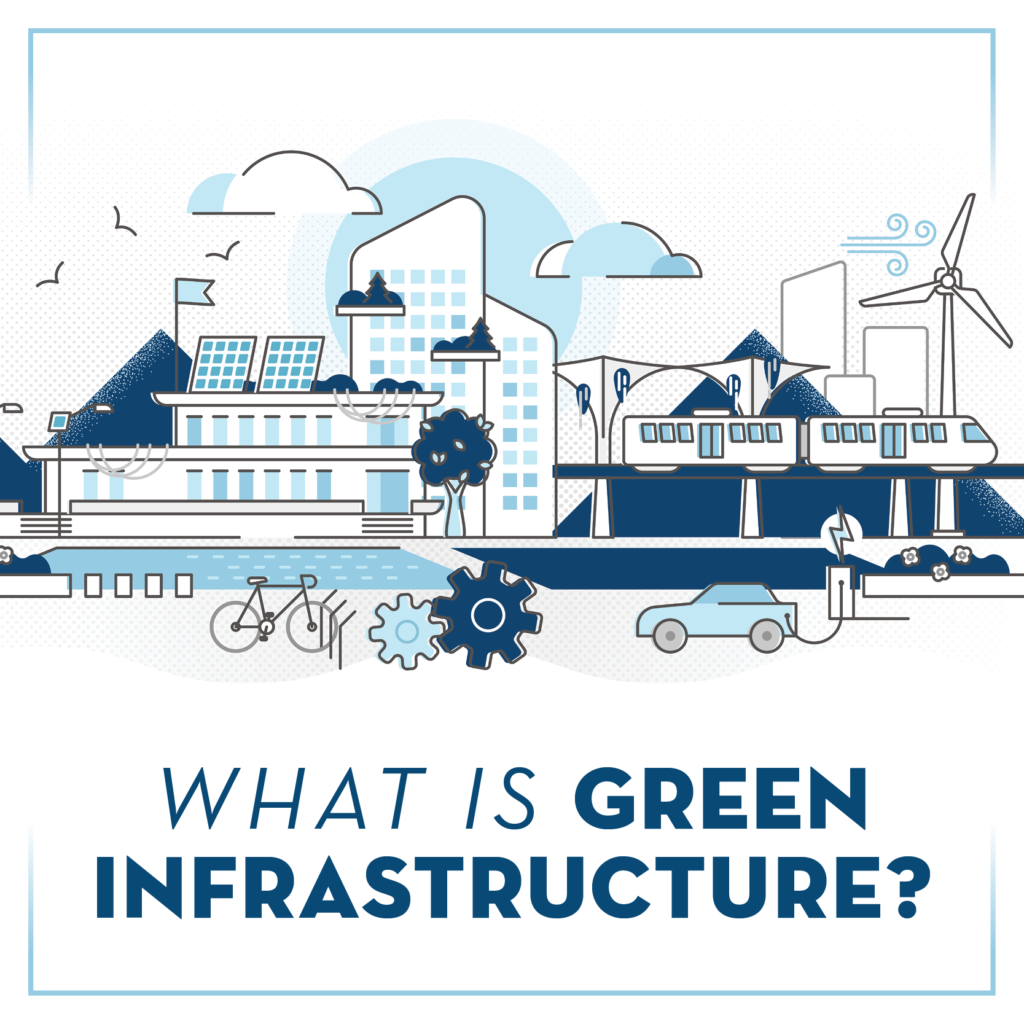On March 2nd of this year, the Department of Environmental Protection’s (DEP) amended Stormwater Management rules went into effect. Under these rules, most projects are required to include Green Infrastructure into their stormwater management designs.
Green Infrastructure refers to stormwater management practices that address stormwater runoff through soils, vegetation, or reuse. Some examples include the following: dry wells, pervious paving systems, rain gardens, and grass swales.
A dry well is an underground system used to collect stormwater. Using roof leaders or inlets, stormwater is directed to the dry well. Once the stormwater is underground, it infiltrates into the soil.
A pervious paving system is a system consisting of a durable, permeable surface that allows stormwater to move through it.
A bioretention system, also known as a rain garden, consists of a soil bed planted with vegetation. The vegetation allows for pollutants to be removed from the stormwater as it seeps into the ground.
A grass swale is a channel lined with turf, used to improve water quality and convey stormwater runoff.
Other than the stormwater management practices noted above, there are many more than can be implemented into one’s designs. Here at WJH, we have been incorporating Green Infrastructure into all of our new development projects. We are knowledgeable, innovative, and ready to take on any project that comes our way in a timely manner. Contact us today for your next project!


